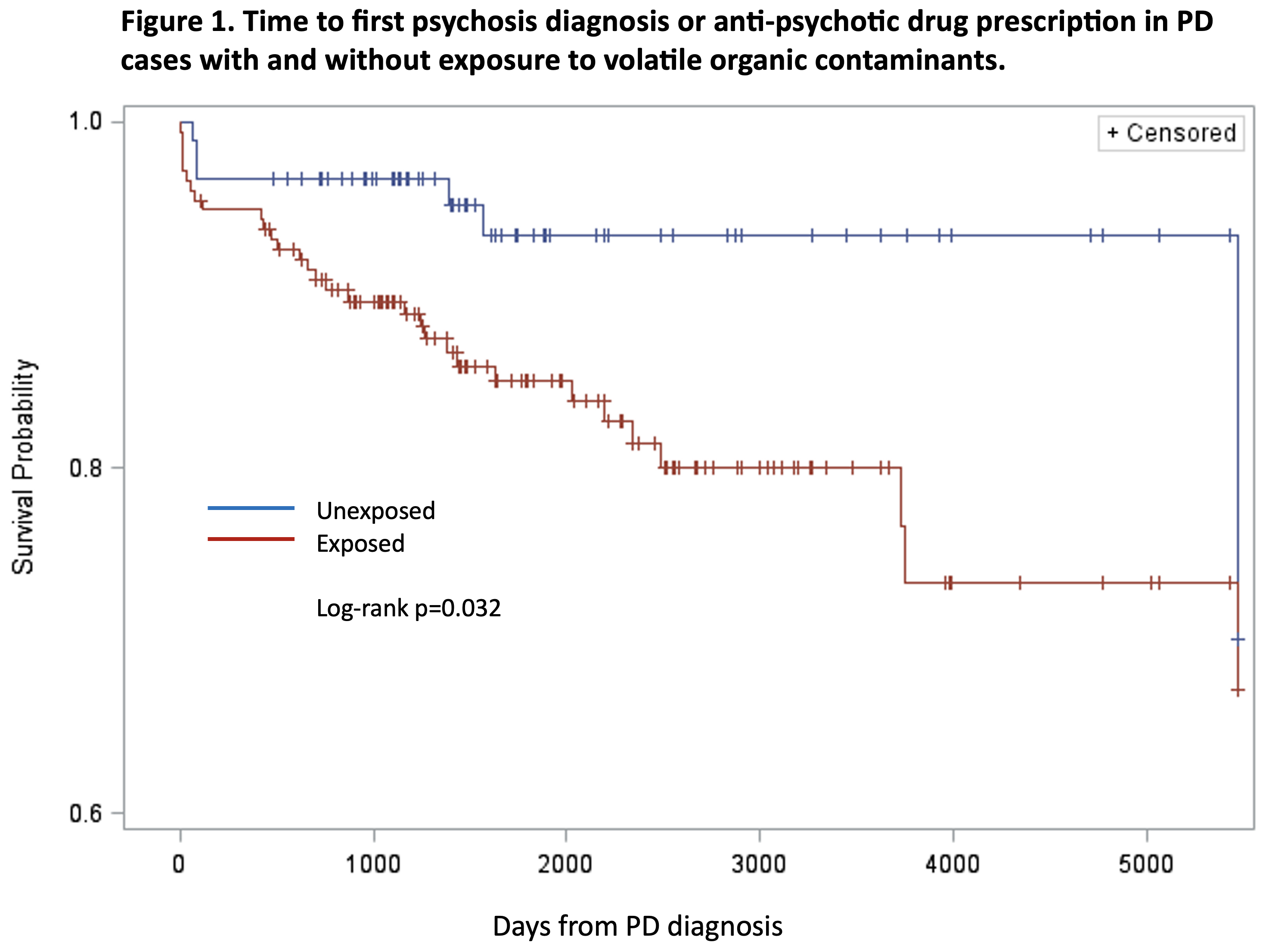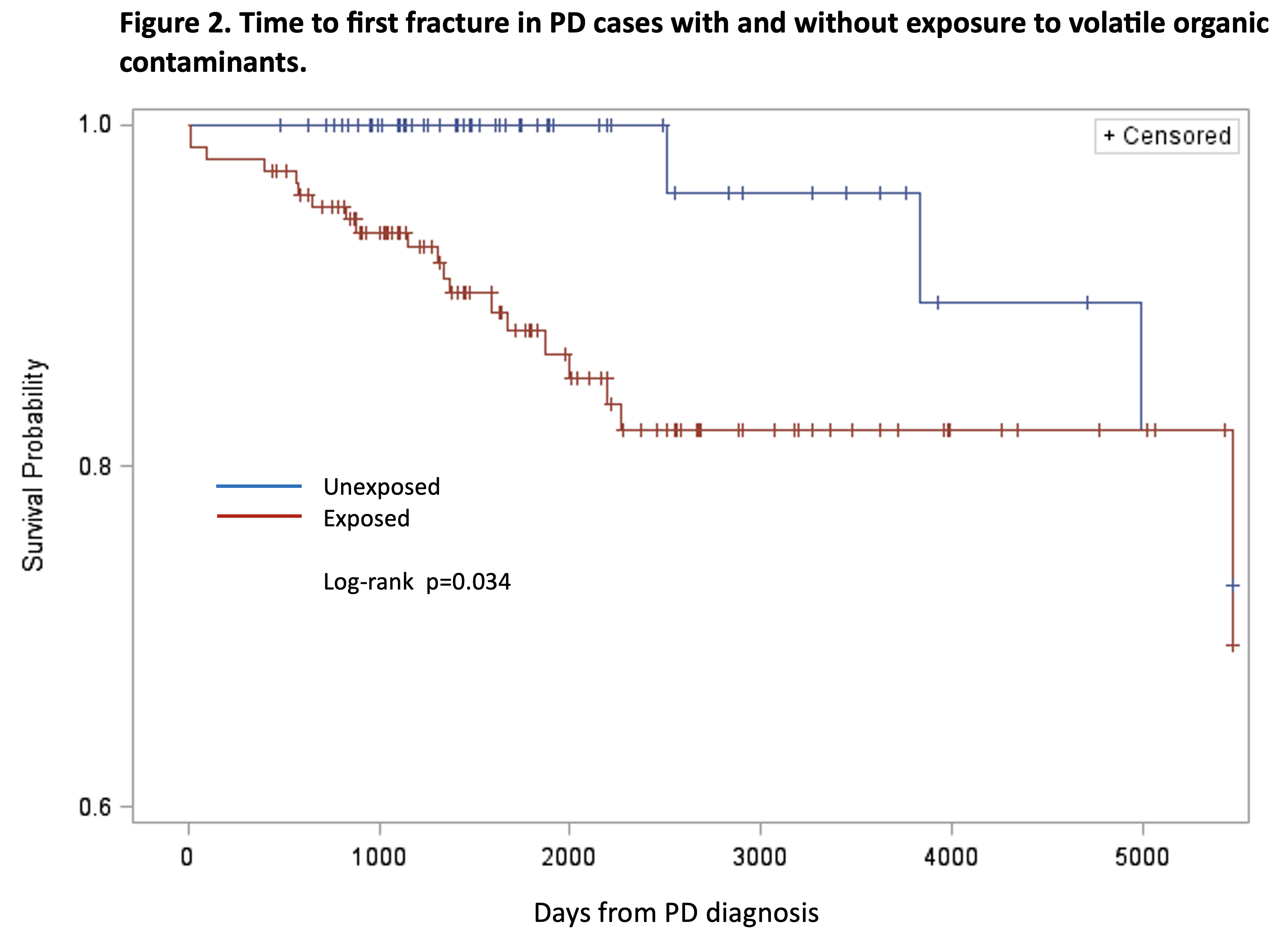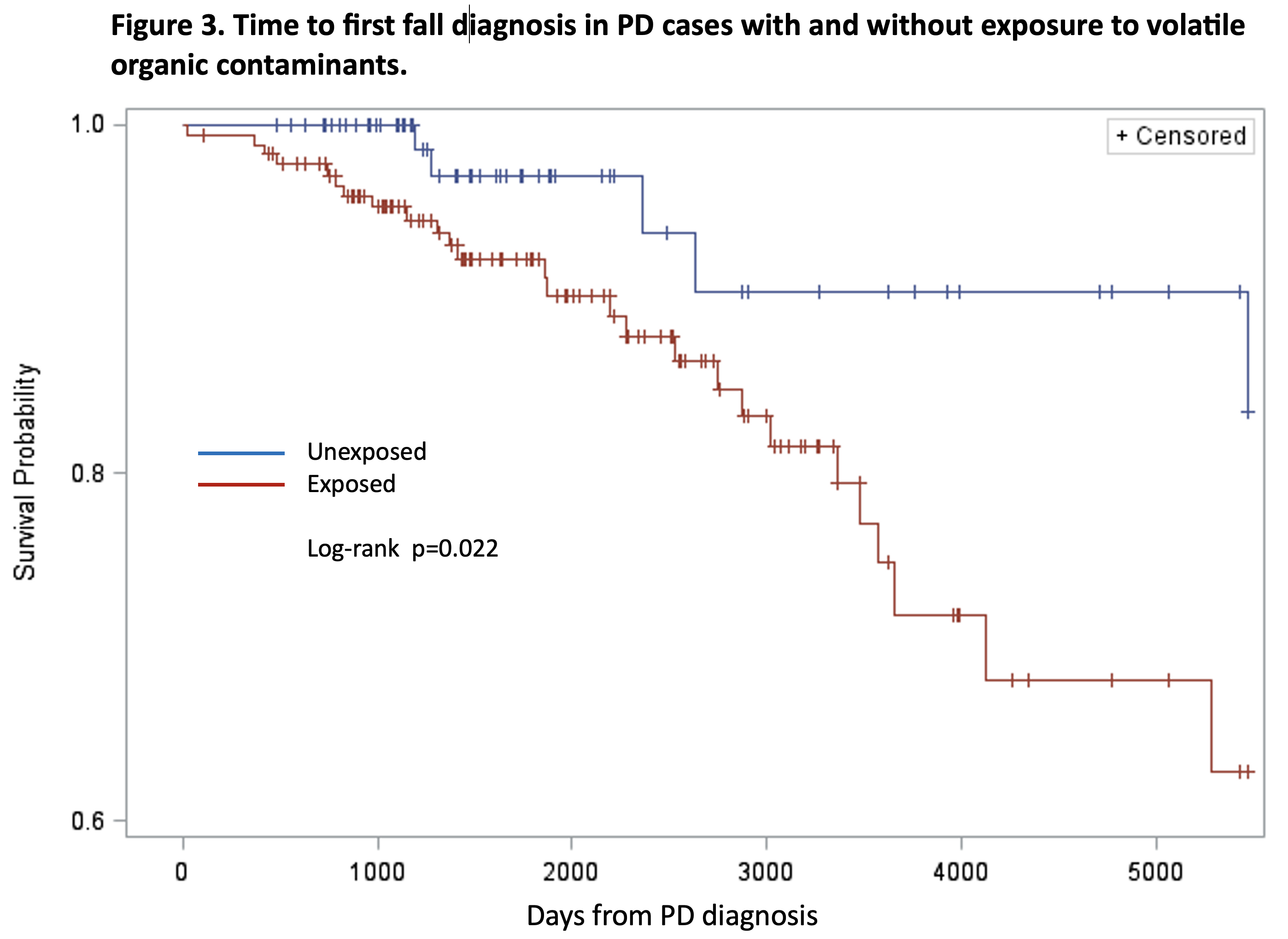Objective: To test whether PD progression is more rapid in individuals who were exposed to volatile organic compounds in the water supply at Camp Lejeune during 1975-1985.
Background: We recently reported an increased risk of PD in servicemembers who resided at Camp Lejeune, North Carolina during 1975-1985, when water supplies were contaminated with trichloroethylene (TCE) at median levels >70-fold the permissible amount. A handful of prior studies suggest that some environmental exposures may affect PD phenotype and/or rates of progression, but this has not been previously reported for solvent exposures.
Method: A cohort of 172,128 Marines who resided at Camp Lejeune between 1975-1985 was previously assembled by the US Agency for Toxic Substances and Disease Registry (ATSDR). We searched Veterans Administration (VA) healthcare databases from 2000-2021 for ICD codes for PD, and verified diagnosis and incidence dates by chart review. Using ATSDR-derived exposure estimates based on residential addresses and dates, we classified individuals with PD as exposed or unexposed to total volatile organic contaminants (TVOC). We used Kaplan-Meier and Cox regression models adjusted for age, sex, and race to test differences between exposed and unexposed groups in the time from PD diagnosis until a) receiving a diagnosis of psychosis or prescription for an anti-psychotic medication, b) first fracture diagnosis, and c) first fall diagnosis.
Results: 270 individuals were diagnosed with PD, 93 of whom had no residential water exposure to TVOC. Median cumulative TVOC among the exposed was 4790 ug/L – months, more than 50-fold the EPA maximum contaminant level. Time until psychosis [figure1], first fracture [figure2], and first fall [figure3] were all shorter in exposed than in unexposed individuals. In Cox models adjusted for age, sex, and race, hazard ratios (HR) were increased more than 2-fold for all three outcomes in exposed servicemembers with PD.[table1]
Conclusion: PD progression may be faster in persons exposed to high levels of TCE and other volatile organic compounds in water decades earlier. Millions of people have been and continue to be exposed to these chemicals in air, food, and water.[1][2]
References: [1] Agency for Toxic Substances and Disease Registry (ATSDR). Toxicological profile for Trichloroethylene (TCE). Atlanta, GA. 2019.
[2] Wu C, Schaum J. Exposure assessment of trichloroethylene. Environ Health Perspect. 2000;108 Suppl 2:359-363.
To cite this abstract in AMA style:
S. Goldman, F. Weaver, B. Gonzalez, K. Stroupe, L. Cao, K. Colletta, E. Brown, C. Tanner. Parkinson’s disease (PD) progression is associated with past exposure to organic contaminants in water at Marine Corps Base Camp Lejeune [abstract]. Mov Disord. 2023; 38 (suppl 1). https://www.mdsabstracts.org/abstract/parkinsons-disease-pd-progression-is-associated-with-past-exposure-to-organic-contaminants-in-water-at-marine-corps-base-camp-lejeune/. Accessed October 17, 2025.« Back to 2023 International Congress
MDS Abstracts - https://www.mdsabstracts.org/abstract/parkinsons-disease-pd-progression-is-associated-with-past-exposure-to-organic-contaminants-in-water-at-marine-corps-base-camp-lejeune/




